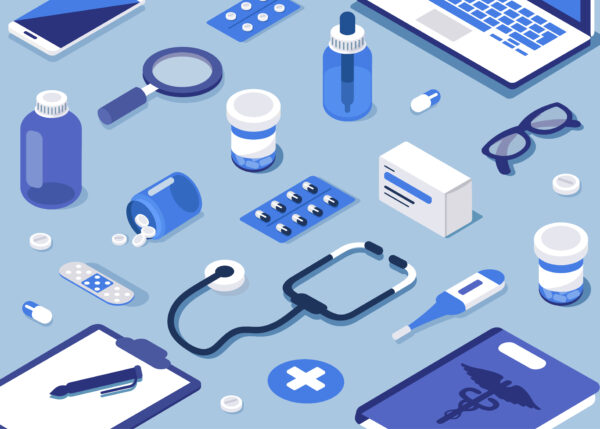
The need for a high-performing hospital pharmacy has never been clearer.
Increasingly complex drug therapies, fluctuating demand for critical medications, and escalating staffing shortages are just a few of the challenges that an efficient pharmacy department can help address. Although this function has typically operated in the background of care delivery, the time has come to elevate the role of pharmacy in healthcare.

Health Benefit Consultants, Share Your Expert Insights in Our Survey
Ken Perez Ken Perez is VP of Healthcare Policy & Government Affairs at Omnicell, a leading provider of medication management solutions and adherence tools for health systems and pharmacies.
Patients and providers are ready for a more involved pharmacy
According to recent research, people are placing greater trust in pharmacists’ role in care management, including prescribing medications, conducting health and wellness screenings and providing disease-specific counseling. In addition, nearly 8 out of 10 people think pharmacists are a reliable source of general health information beyond medication questions—and rightly so. Today, more than half of U.S.-licensed pharmacists are doctors of pharmacy, which means they receive as much classroom clinical instruction as medical doctors.
Not only are patients comfortable with pharmacists being more involved, physicians place a high level of trust in them as well. And pharmacists are ready to take on additional responsibilities. When asked if they could meet physician and patient needs in the future, more than 75% felt they had the ability to serve as a resource for drug interactions, medication management and pharmaceutical therapy.
Outdated processes may be holding pharmacists back

A Deep-dive Into Specialty Pharma
A specialty drug is a class of prescription medications used to treat complex, chronic or rare medical conditions. Although this classification was originally intended to define the treatment of rare, also termed “orphan” diseases, affecting fewer than 200,000 people in the US, more recently, specialty drugs have emerged as the cornerstone of treatment for chronic and complex diseases such as cancer, autoimmune conditions, diabetes, hepatitis C, and HIV/AIDS.
Pharmacists are poised to assume an expanded clinical role, yet 75% of their time is still focused on non-clinical activities. By moving toward an autonomous pharmacy—where manual, error-prone activities are replaced with automated processes that are safer and more efficient—hospitals and health systems can help pharmacy reach its potential. This will allow it to serve as a resource for patients and other clinicians alike.
By leveraging technology, pharmacy departments can improve medication safety, optimize the pharmaceutical supply chain, and alleviate some of the challenges of persistent staffing shortages.
Improving medication safety
Since medications are the primary treatment method for most patient conditions, ensuring consistent and reliable medication preparation and distribution can have a significant impact on patient safety and outcomes. One area where technology can make a difference is sterile compounding.
In most hospitals, sterile compounding is still a manual process that is prone to inaccuracies and human error. Automating IV compounding through robotic technology can minimize the potential for human error, increase process reliability and boost throughput.
Pharmacy professionals can prioritize which medications a robot prepares, taking into consideration the hospital’s unique patient mix and medication needs. When pharmacies weave robotics into their compounding efforts, they can improve efficiency, reduce risk and support getting the right dose to the right patient in a timely manner.
Optimizing supply chain
Disconnected data across multiple systems throughout the hospital can lead to safety, compliance and interoperability issues. Without pharmacy data analytics, it’s difficult to understand and analyze operational, financial and clinical performance challenges healthcare organizations face every day.
Data intelligence solutions that analyze the full spectrum of medication data—including expiration dates, medication location, therapeutic use and dispensing rates—can uncover trends, allowing pharmacy leaders to better optimize their pharmaceutical supply chain. For example, during Covid-19, healthcare organizations have seen recurring drug shortages that have sometimes escalated into medication stockouts.
With data intelligence tools, a pharmacy can monitor Covid-19 treatments and calculate days on hand and quantity on hand, which collectively can help calculate whether—and by when—inventory levels may be low. Real-time dashboards provide greater visibility into the medication supply chain, enabling pharmacy leaders to analyze operations and drive improvements in medication inventory optimization, medication waste reduction and drug diversion monitoring.
Alleviate staffing pressures
Automating the pharmacy does not mean replacing the talented staff members that work within it. On the contrary, by leveraging technology, hospitals and health systems can free pharmacy staff to focus on higher-value activities.
When pharmacy professionals are able to utilize their expertise and skillsets, they are available to take on complex tasks or unexpected situations. Freeing up time can also encourage pharmacy professionals to support patient care directly, where state law and commercial payers allow.
This can mitigate some of the risks of pervasive staffing shortages, because pharmacists can support nurses and physicians, including efforts pertaining to medication education, chronic condition counseling and wellness care.
The time is now
Hospital and health system pharmacies are facing a critical moment. To seize the opportunity to play a larger role in patient care, pharmacy leaders must innovate to streamline operations and improve outcomes.
By pursuing strategies and technologies that enable an autonomous pharmacy, organizations can align pharmacy with other forward-thinking departments and strengthen their overall ability to deliver the safest, most efficient care for patients.
Photo: Irina_Strelnikova, Getty Images












